You Can See Vitiligo On Someone’s Skin—But Here’s What You Don’t See

Yes, you can see vitiligo. The depigmented skin caused by autoimmune condition is often incredibly visible, showing up in the skin and hair of those living with it. And yet those living with vitiligo don’t typically feel seen—because there is so much more to living with vitiligo than what appears on the surface.
We call this the “vitiligo paradox.” Vitiligo is a highly visible condition with an almost equally invisible impact on the everyday life of those with it. This paradox of being both seen and unseen can fuel feelings of isolation for those with vitiligo as they are often misunderstood by the people around them who aren’t able to grasp the reality of what they are living through.
To bring awareness to the ‘invisible’ side of a life with vitiligo, we invited our Living Dappled community to share their stories by bringing awareness to what people see—and what they don’t. The storytelling opportunity struck a chord in our community and the stories poured in about the reality of a life with vitiligo that most people never see.
Here are their stories.
Erika Page
What you see:
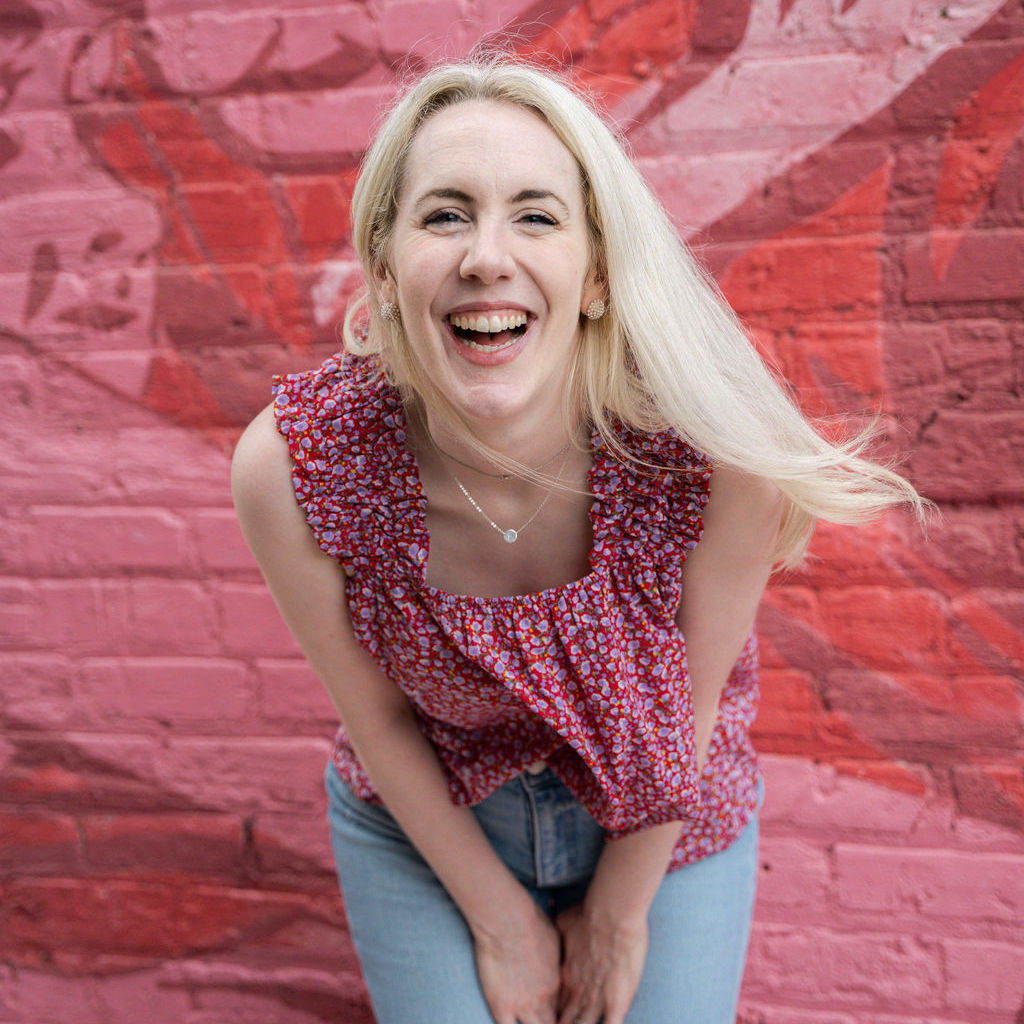
What you don’t: The unseen story of a life with vitiligo. The reality of what it’s like to mentally and emotionally experience the loss of 100% of your skin’s pigment, one small spot at a time, during your teens and twenties. The thoughts, and decisions about my skin that have made up the fabric of my everyday life and have influenced every aspect of my life—clothing, makeup, sunscreen, friends, jobs, interactions, dating, self-esteem—and all of the moments big and small—graduation, wedding, pool days, where I sit at restaurants. Just to name a few.
A girl who got vitiligo at 7 years old and lost 100% of her pigment over 20 years. A girl who spent most of her life being stared at because of her spotted skin. A girl who thought she didn’t deserve friends because of her skin. A girl who hid her skin and hair with tanners and dye for nearly a decade while mentally struggling to come to terms with the changes to her body. A girl who kept trying—and finally found the courage to love herself exactly as she is (most days).
Natalie Ambersley
What you see:
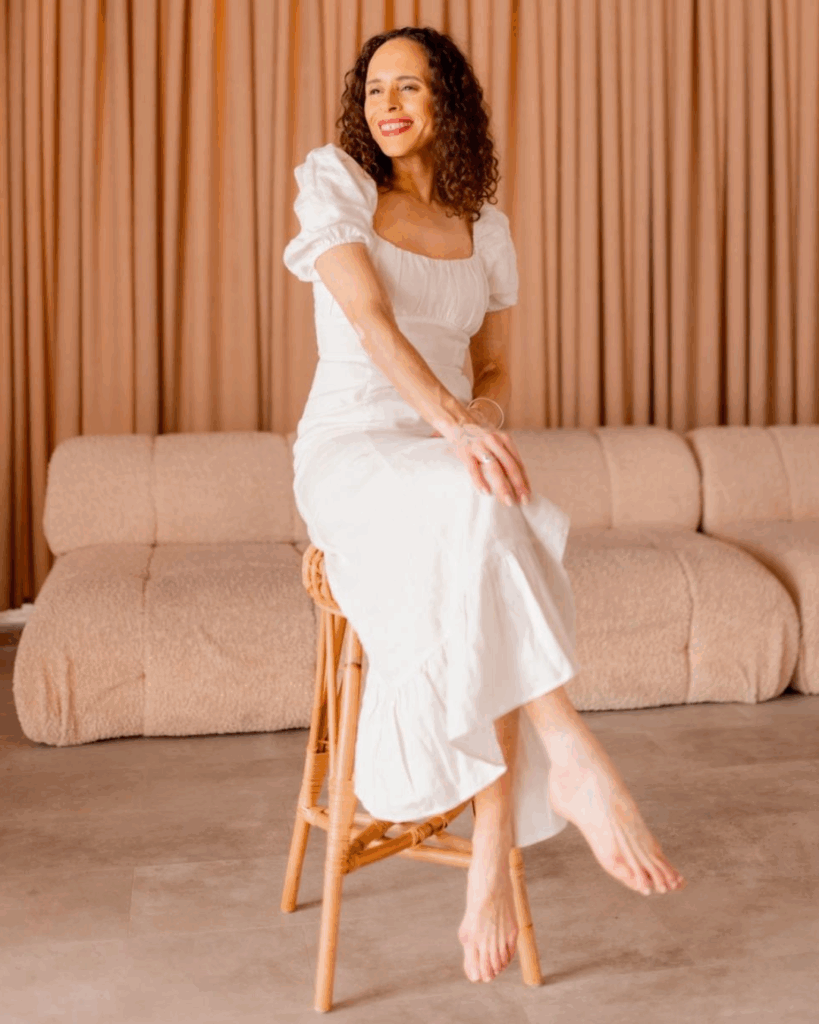
What you don’t: A little girl who thought she was the only one in the world with vitiligo because she never saw anyone who looked like her. A girl who couldn’t hit the beach without tons of personal pep talks. A girl who never thought she’d own a pair of shorts, but later did when she embraced her skin. A girl who was scared to date and thought no one would want her because of her skin. A girl who didn’t know finding her community would change her life and help her inspire others.
There is so much more to vitiligo than what you see on the outside, and whilst the visible aspect is hard, the psychological aspect can be even harder for some. From the loss of identity, to the hyper awareness in social settings to the invisibility and misrepresentation, vitiligo isn’t always here to make life easy!
Sonya Charles
What you see:
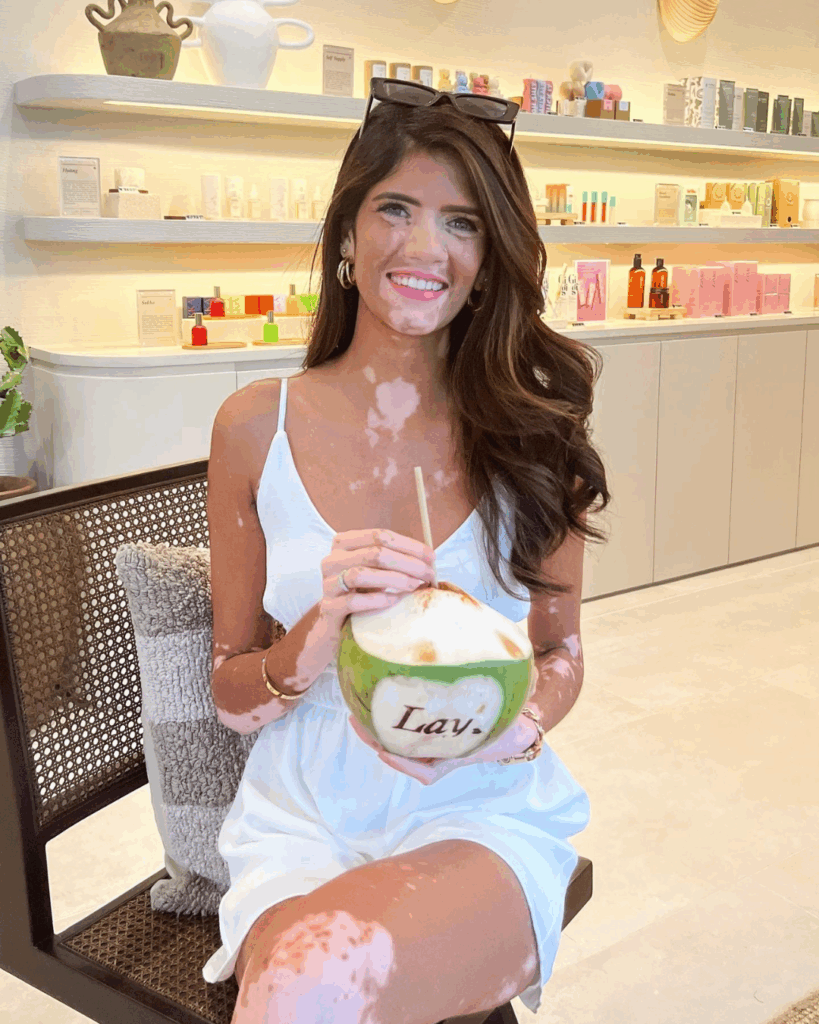
What you don’t: A little girl who had no idea how much her world was going to change. A girl who had to come to terms with the fact that she looked different from everyone around her. A girl who left her home for a fresh start in a foreign country where she found herself and learned to love herself. A girl who took a leap of faith and pursued her dreams of being a model—despite being told she wouldn’t make it. A girl who finally learned to love herself and the skin she’s in—and never let it hold her back.
You see spots.
I see power.
You see different.
I see real.
Vitiligo doesn’t ask for your approval—it taught me how to show up, unapologetically, every day. What you see is just the surface. What you don’t is everything it took to love it.
Victoria Marie
What you see:
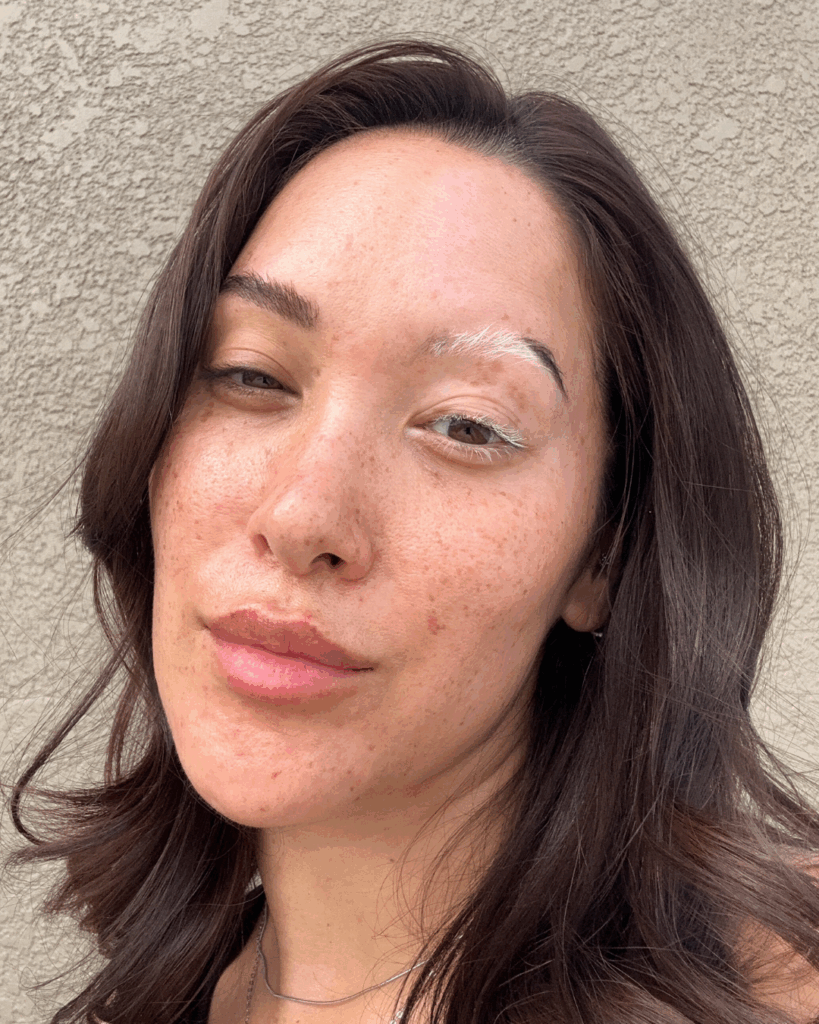
What you don’t: A girl before vitiligo on a beach stroll. My kids will never know this version of me. A girl who looks confident in public. Being out in public makes me anxious but you’d never know from the outside. A girl who found community. Finding community can be hard to do, but once you do, it feels like home. A girl with sunburn. Sun protection is my most important skincare. A girl who feels confident on some days, but not all of them.
I didn’t grow up with vitiligo. Developing it as an adult felt like losing the version of myself I had always known.
I had to relearn how to love a version of me I never expected.
It didn’t just change how I looked, it challenged everything I believed about beauty, worth, and visibility.
There were days I didn’t recognize myself. Days I grieved the old me.
But healing came when I stopped fighting for who I was… and started embracing who I’m becoming.
Rita Adams
What you see:
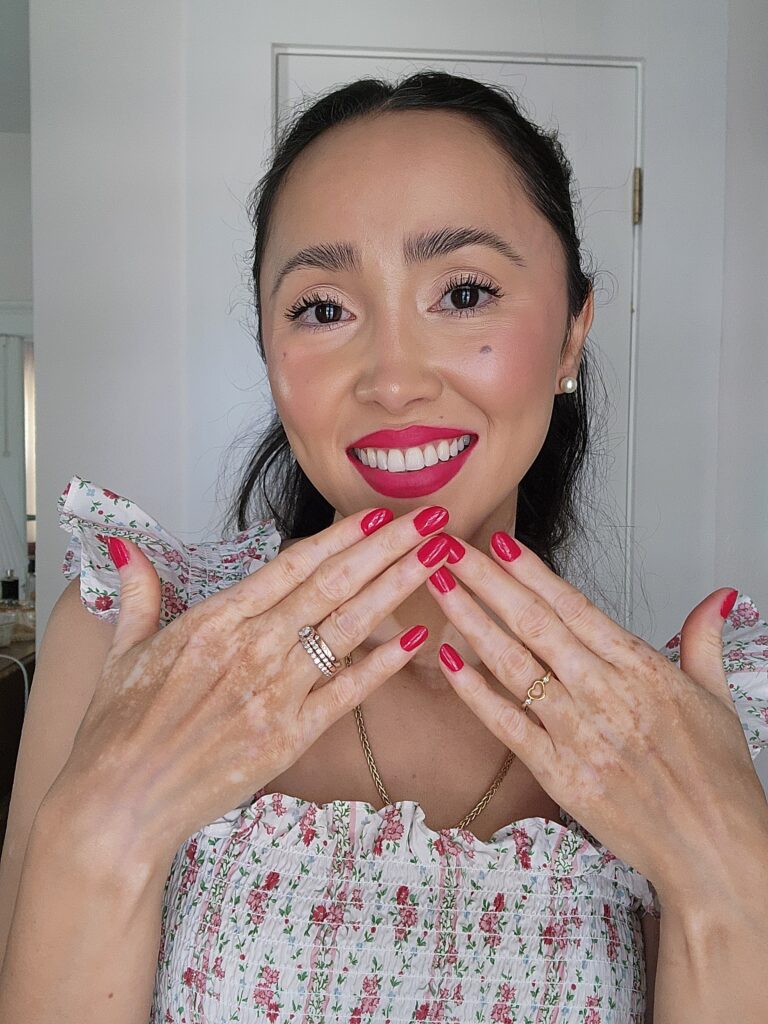
What you don’t: How scared I was of developing white patches on my hands that would make it impossible to hide.
Developing vitiligo at almost 20 years old was pretty impactful for me. Growing up with “normal” skin and suddenly watching myself slowly change was not easy. The girl I knew all my life was slowly disappearing and there was nothing I could do to stop it.
At this point, I’ve lived almost half of my life with vitiligo, and I have never been more confident and happy in my own skin.
Reshma Vincent
What you see:
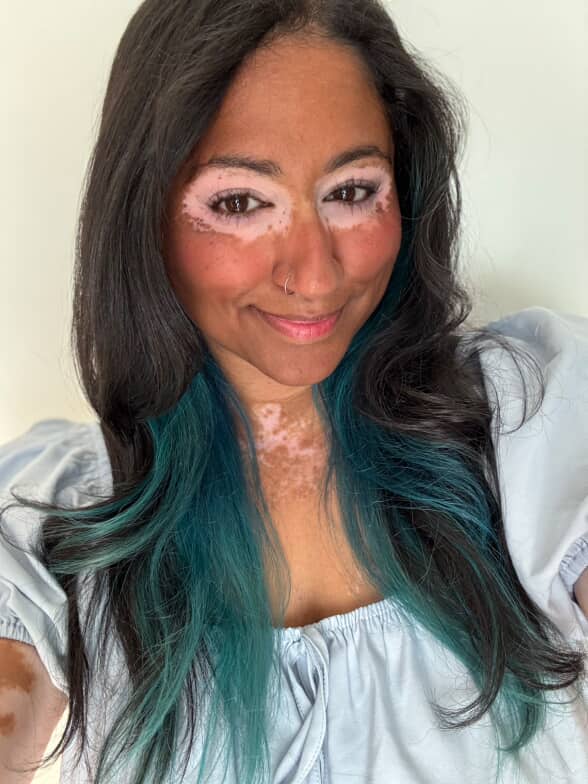
What you don’t: The little girl who was too young to understand what was happening to her body. The girl who smiled in public, but picked herself apart in private. The woman teaching her son that beauty comes in every color—even the ones that change.
The hardest parts are the ones no one sees.
The stares. The internal battles. The days where confidence feels far away.
But every invisible struggle has led me here — learning, healing, growing.
Bhavana
What you see:
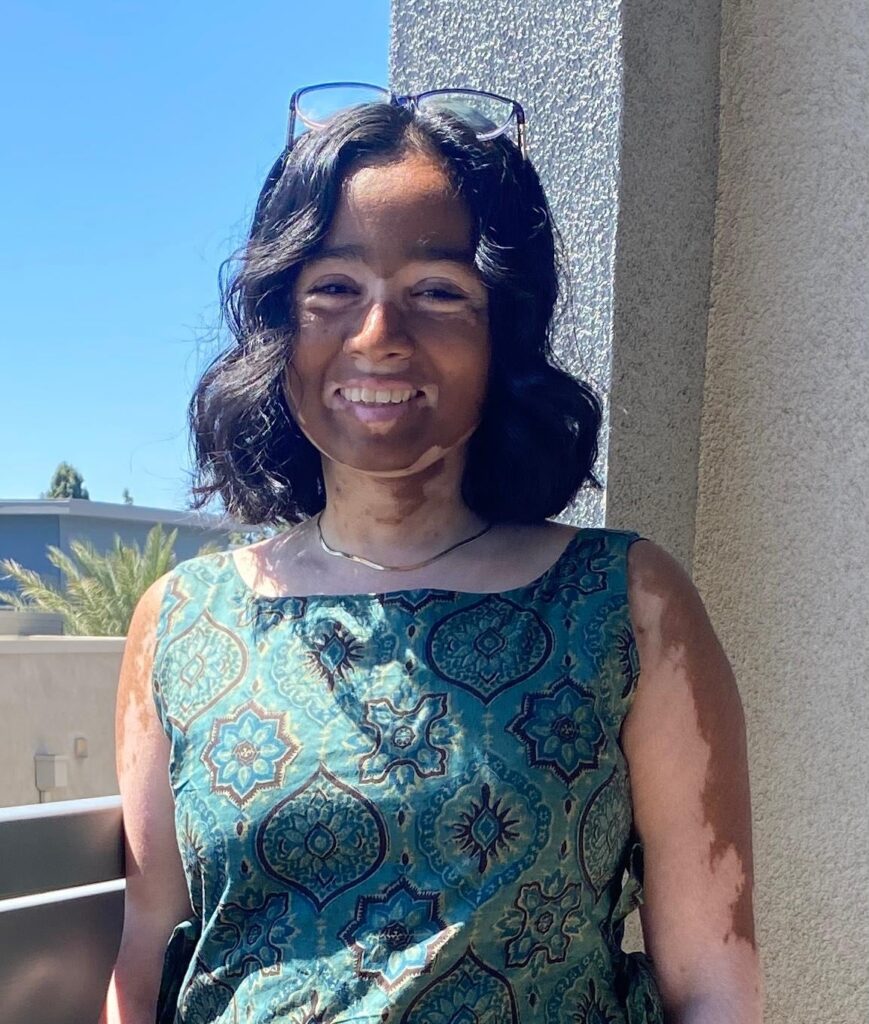
What you don’t: Sometimes, it was hard to understand why people seemed to think vitiligo was my only identity. It wasn’t always easy to be the confident version of myself, but with the right people around me, life became a lot easier. I was always scared to start new relationships because I didn’t know what people were really thinking about me.
As a kid, I was stared at and always covered myself up. I never thought I’d be confident enough to wear shorts. But I was able to make peace with it and become the truest version of myself because of my family and the community I built.
Tara
What you see:
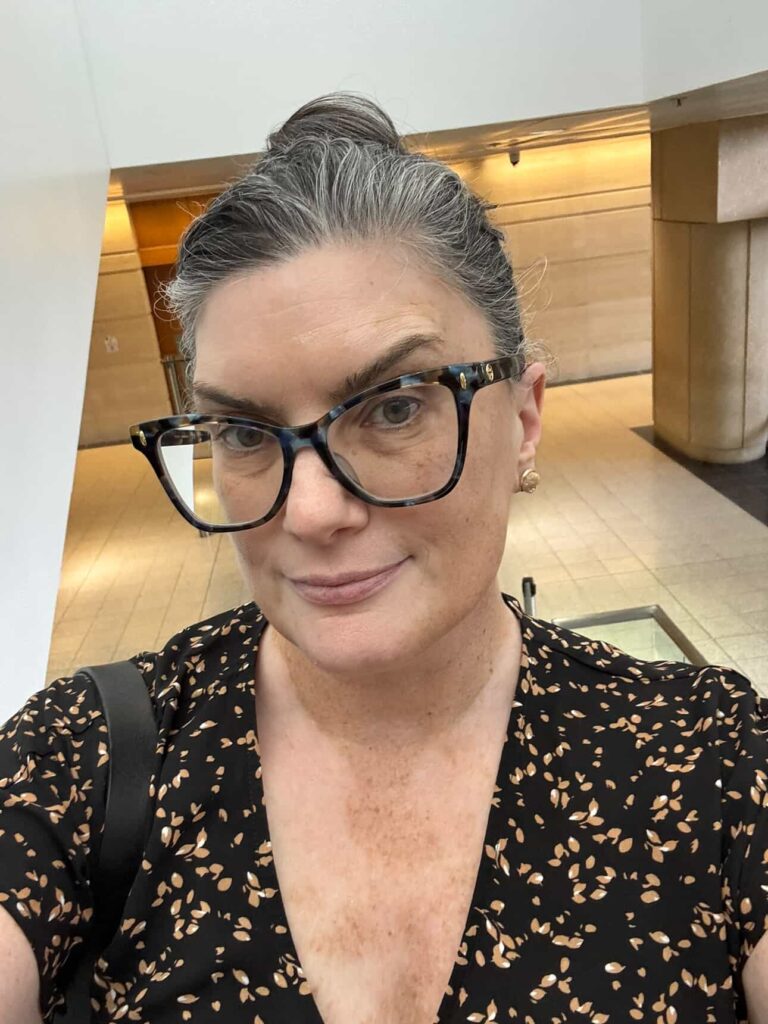
What you don’t: I tell myself I shouldn’t let this affect me. But it does. My spotted, blotchy skin makes me feel like I stand out, in the wrong way. Like I need to cover up. I live in Florida, where covering up isn’t exactly easy. I avoid beaches and pools. I use filters on my photos, even though I embrace natural aging. Most days, I try to convince myself it’s no big deal. My dermatologist once said vitiligo is like “clouds on skin.” I think that’s beautiful. But I often feel anything but.
Lulu
What you see:
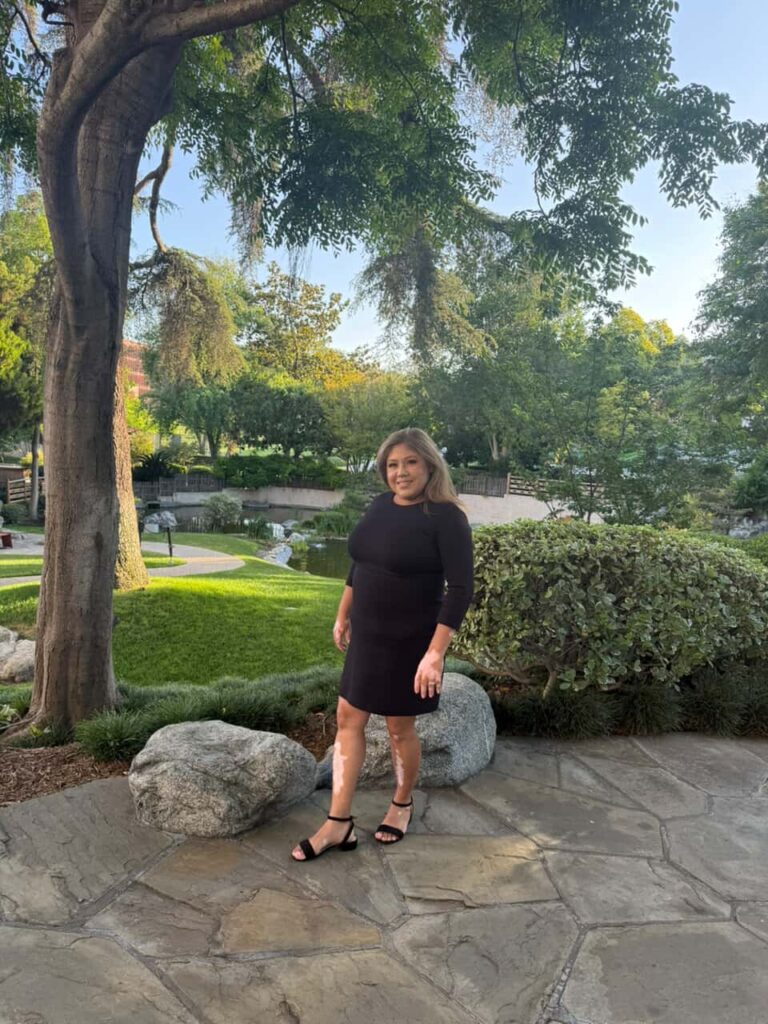
What you don’t: The quiet struggle with confidence: “Before I embraced my skin, I spent years hiding—long sleeves, avoiding pictures, and doing my best to blend in. It took time to get to where I am now.”
The mental weight: “It’s more than skin. It’s the overthinking, the wondering if people are staring. Even when I smile, that weight can still be there.”
The strength behind showing up: “When you see me now, spots and all, know that didn’t happen overnight. Every time I show up as myself, it’s a choice—and it’s one I’m proud of.”
Cheryl
What you see:
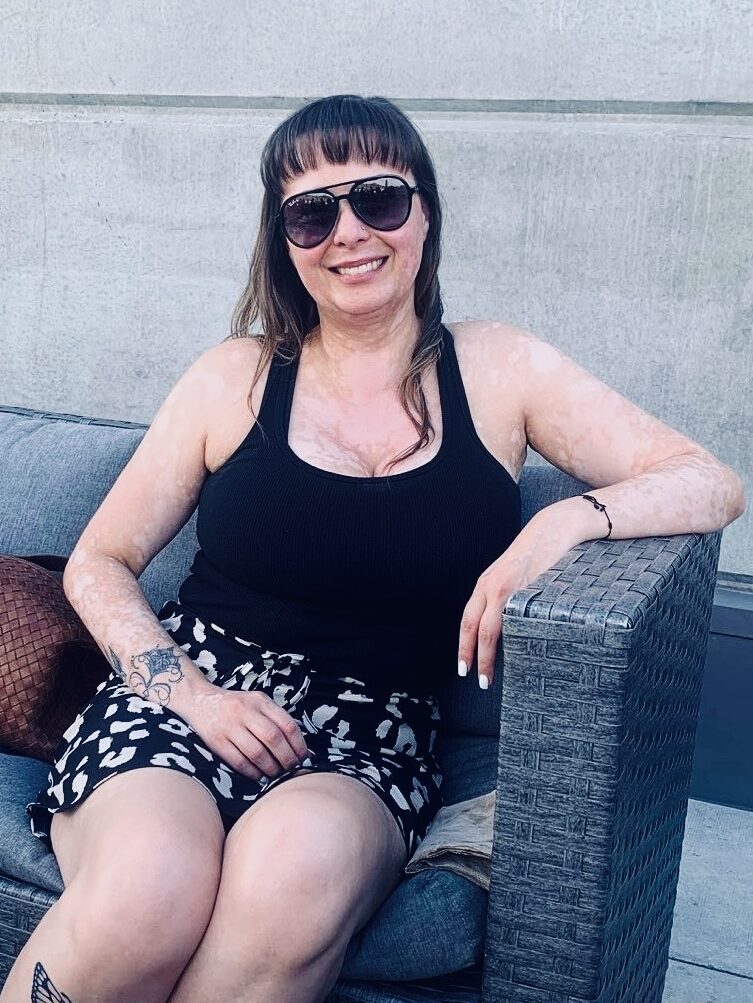
What you don’t: My skin has now consistently changed for the past 5 years. I have universal vitiligo, 80% or more of my pigment will disappear. I don’t know when it will stop, or what I will look like when it does. I miss how I used to look and the days when I enjoyed being in the sun without the worry and fear. I have lots of hard days and can feel isolated, even though I have supportive family and friends. I feel shame for not being stronger and more confident. I’m relearning to love the skin I’m in and need to remind myself that beauty is a feeling.
Adrienne
What you see:
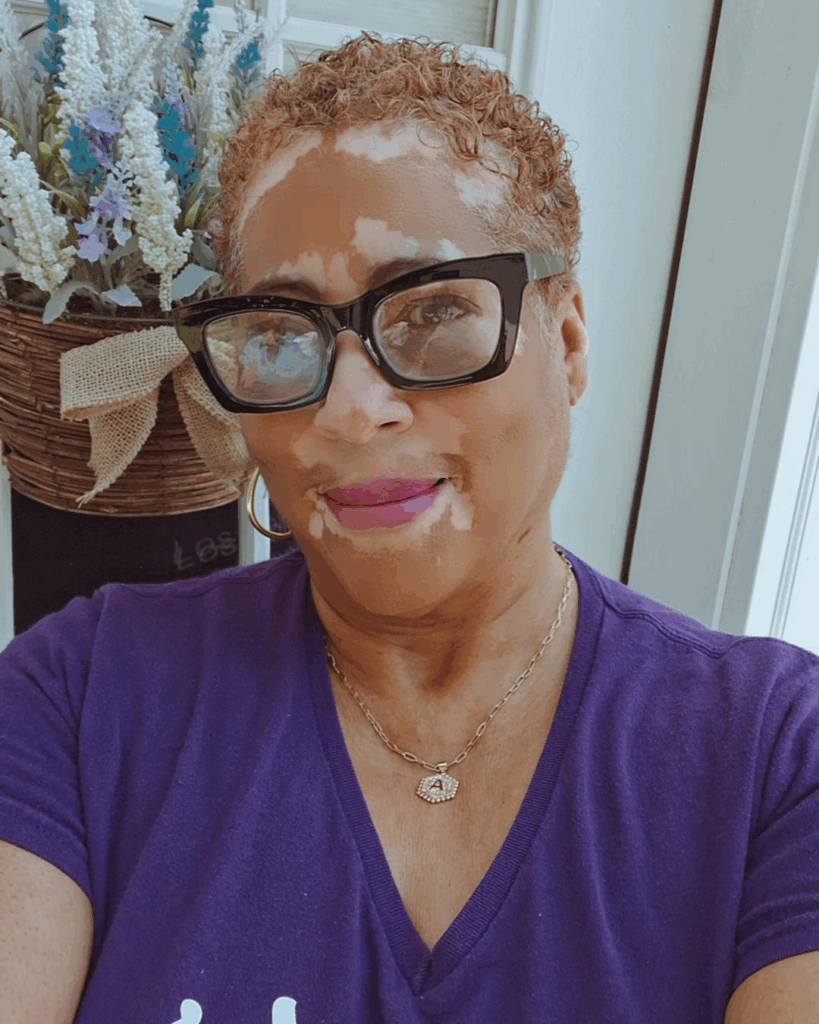
What you don’t: Vitiligo is the toughest thing physically and emotionally I have dealt with. What people need to know is there is a battle to love the person you see in the mirror. There are so many negative thoughts because of stares and comments. You feel helpless…. When you get to the victory [of] understanding that vitiligo is something you have, it is not the totality of who you are as a person. You start to love and accept yourself, and help others do the same. We are not all at the same place in our journey with vitiligo, but I thank God for having safe spaces to land in this community.
Komal
What you see:
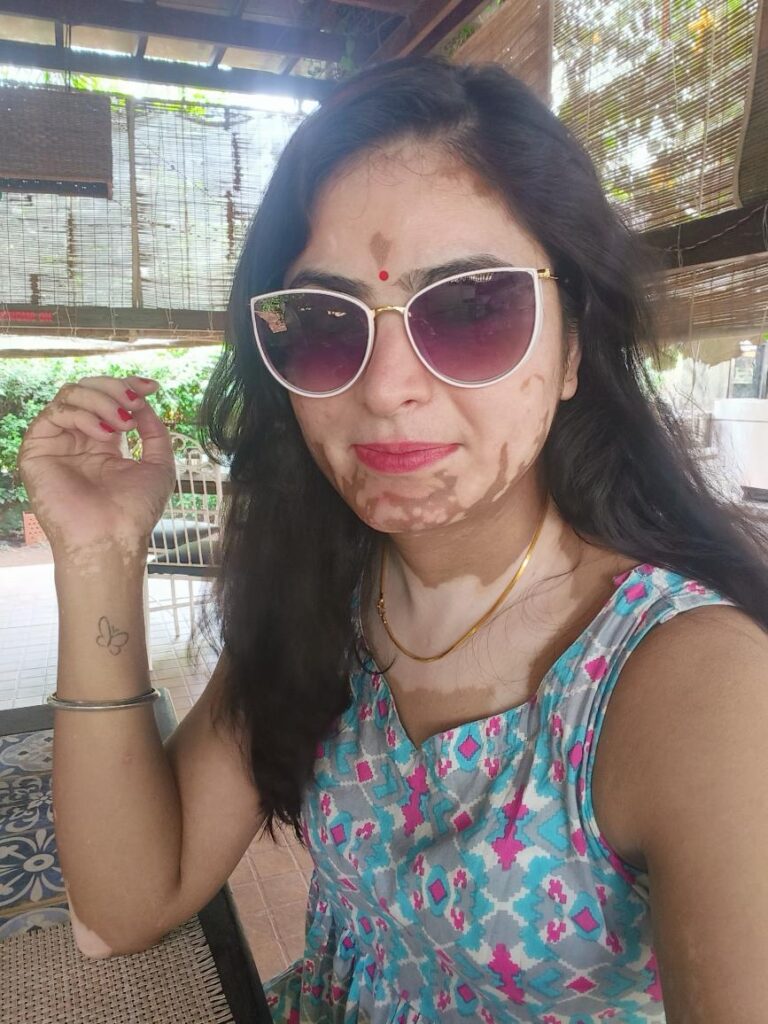
What you don’t: I used to have a complex about my looks. I used to be a girl with very low confidence. I feel people stare at me and try to avoid my existence. I am visible to this world but not the way I want to be visible to this world. I learned to accept myself the way I am, and started flaunting my spots with confidence everywhere I go.
Jasmine
What you see:
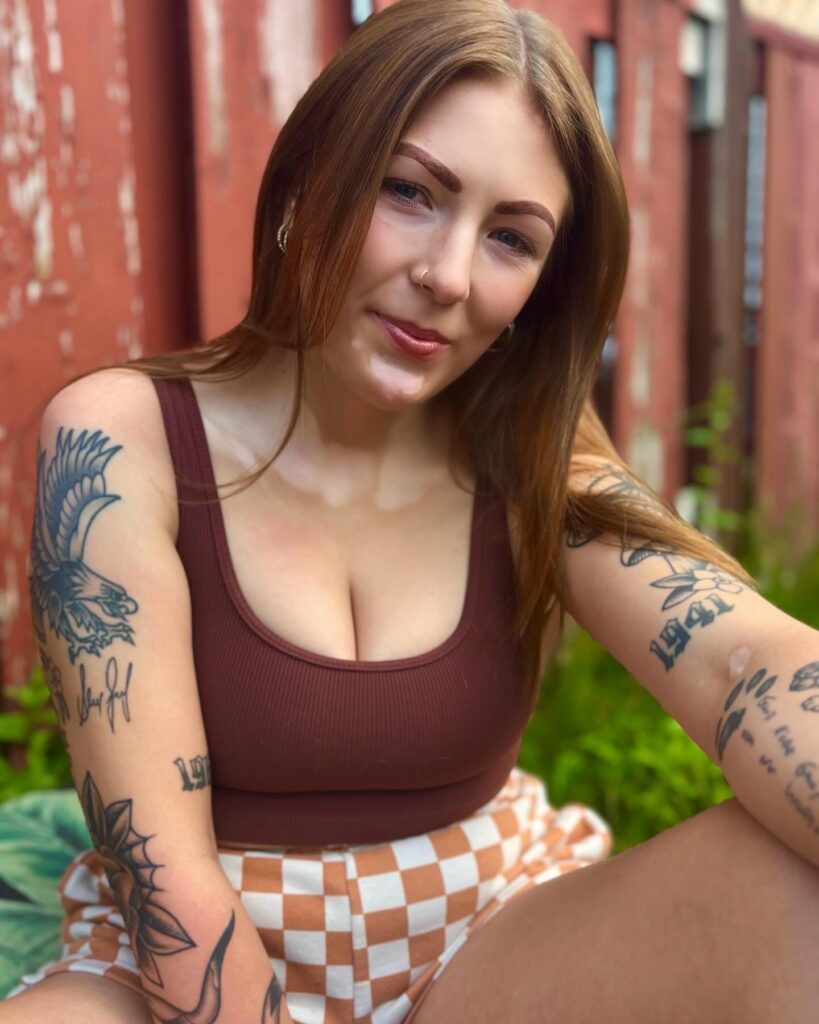
What you don’t: The hours of UV treatment that just made the vitiligo more noticeable. The boxes of creams that didn’t work. The rude comments from passersby who think I’m not aware of the “white stuff” on my face. The makeup products bought and abandoned. Learning to live with it—one day at a time.
Akenna
What you see:
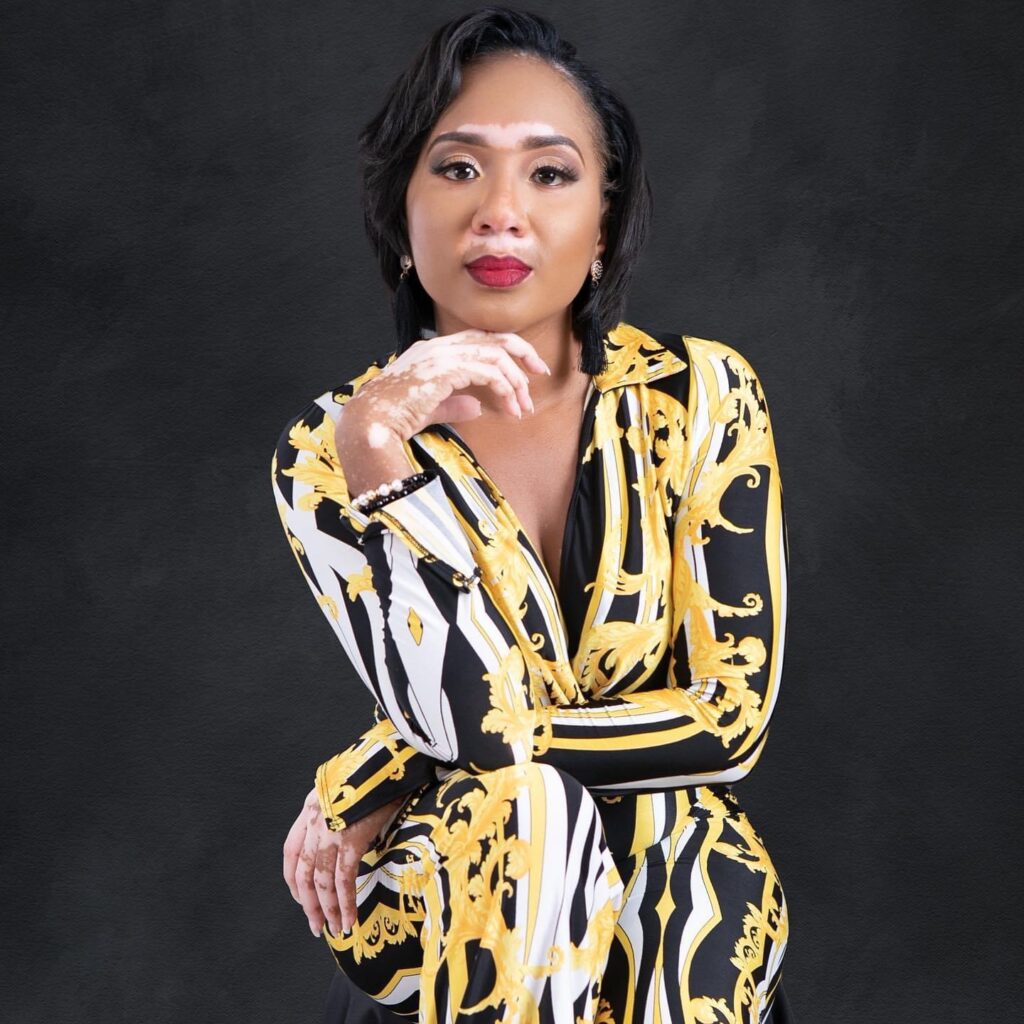
What you don’t: The days I didn’t want to leave the house because of the hassle that comes with ‘showing up bravely’ with vitiligo. The years I spent rebuilding my identity, after life and getting vitiligo almost knocked me down. The hesitation before accepting an invitation, wondering if I’d have to explain or defend something I never chose.
Summary
Everyone’s vitiligo story is different, but what our community showed us with this campaign is this: there’s always more going on than meets the eye. These stories remind us all to bring compassion and curiosity to our interactions with everyone. Yes, the paradox of vitiligo is that it’s a visible condition with an invisible impact—but the paradox of community is that together we are more than the sum of our parts. And when you’re part of the Living Dappled community, you never have to walk alone. We see you—and we’re so glad you’re here.
A patient advocate, editor, and sought-after leader within the vitiligo community, Erika Page is also the Founder and CEO of Living Dappled. After getting vitiligo at the age of seven, she lost 100% of her skin’s pigment over 25 years. She fought her own mental and emotional battle to overcome her insecurities and embrace the skin she was in and today seeks to help other women reclaim their lives with this condition.


